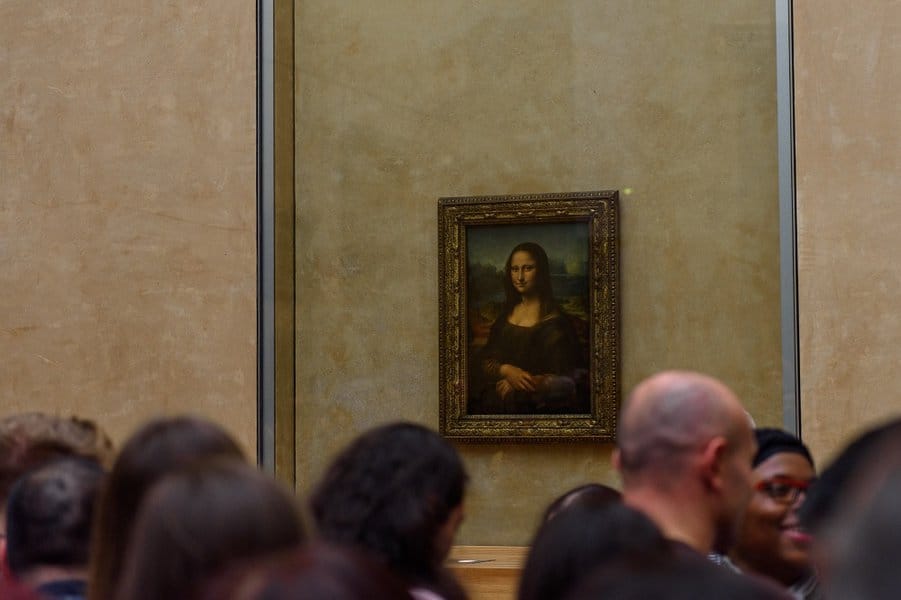Why is the Mona Lisa so Famous

In the vast realm of art, few pieces possess the allure and mystique of Leonardo da Vinci’s masterpiece, the Mona Lisa. This enigmatic portrait, with its subtle smile and haunting gaze, has captivated audiences for centuries, transcending the boundaries of time, culture, and geography. What is it about this painting that renders it so famous, so enduringly fascinating? To understand the Mona Lisa‘s allure, we must delve into its historical context, artistic brilliance, and the layers of intrigue that surround it.
Commissioned by Florentine merchant Francesco del Giocondo around 1503, the Mona Lisa—alternatively known as La Gioconda—emerged from the hands of Leonardo da Vinci during the Italian Renaissance. Yet, its journey from commission to global icon was not immediate. The painting languished in obscurity for centuries, moving through various owners until it gained recognition in the 19th century, particularly after it was stolen from the Louvre in 1911, an event that generated widespread publicity.
Unveiling the Enigma
One of the primary reasons behind the Mona Lisa’s fame lies in Leonardo’s exceptional artistic skill and innovation. Renowned as a polymath of the Renaissance, Leonardo employed groundbreaking techniques and meticulous attention to detail in his works. The Mona Lisa exemplifies his mastery of sfumato—a technique that creates soft, blurred edges and transitions between colors and tones, resulting in a lifelike, almost ethereal quality. This technique, combined with the subtle interplay of light and shadow, lends the painting an unparalleled sense of depth and realism, drawing viewers into its enigmatic world.
Central to the Mona Lisa’s allure is the enigmatic expression of the sitter—an unnamed woman widely believed to be Lisa Gherardini, the wife of Francesco del Giocondo. Her enigmatic smile, poised on the brink of revelation yet forever elusive, has sparked endless speculation and interpretation. Some interpret it as a reflection of inner contentment or amusement, while others see hints of melancholy or mystery. This ambiguity invites viewers to project their emotions and narratives onto the painting, fostering a deeply personal and subjective connection.
Moreover, the Mona Lisa’s fame is perpetuated by its cultural resonance and widespread reproduction. Reproduced countless times in various forms—from prints and posters to digital replicas—the image of the Mona Lisa has permeated popular culture, becoming a ubiquitous symbol of artistry and sophistication. Its likeness graces everything from coffee mugs to t-shirts, serving as a shorthand for high culture and artistic excellence. This ubiquity, coupled with its intrinsic beauty and mystery, ensures that the Mona Lisa remains firmly entrenched in the public consciousness.
Captivates the World
Furthermore, the painting’s status as an object of desire and fascination is amplified by its history of thefts, vandalism, and controversies. The aforementioned theft in 1911 catapulted the Mona Lisa to international fame, transforming it from a masterpiece to a cultural phenomenon. Subsequent incidents, including vandalism with acid in 1956 and attempted attacks with rocks and a ceramic mug in later years, only served to heighten its mystique and allure. Each episode reinforced the perception of the Mona Lisa as a priceless treasure, worthy of protection and reverence.
Beyond its aesthetic and historical significance, the Mona Lisa also serves as a testament to the enduring power of art to evoke emotion, provoke thought, and transcend boundaries. Across time and space, people from diverse backgrounds and cultures are drawn to the Mona Lisa, united by a shared fascination with its beauty and mystery. Whether viewed in person at the Louvre or encountered through reproductions and digital media, the Mona Lisa continues to inspire wonder and intrigue, inviting viewers to contemplate the nature of beauty, identity, and human existence.
Conclusion
The Mona Lisa’s fame is a product of myriad factors—the genius of its creator, the enigma of its subject, its cultural resonance, and its tumultuous history. Yet, at its core, the painting’s enduring allure lies in its ability to transcend the confines of time and space, resonating with audiences across generations and cultures. As long as humanity continues to seek beauty, meaning, and connection, the enigmatic smile of the Mona Lisa will endure as a symbol of artistic excellence and the enduring power of the human spirit.
